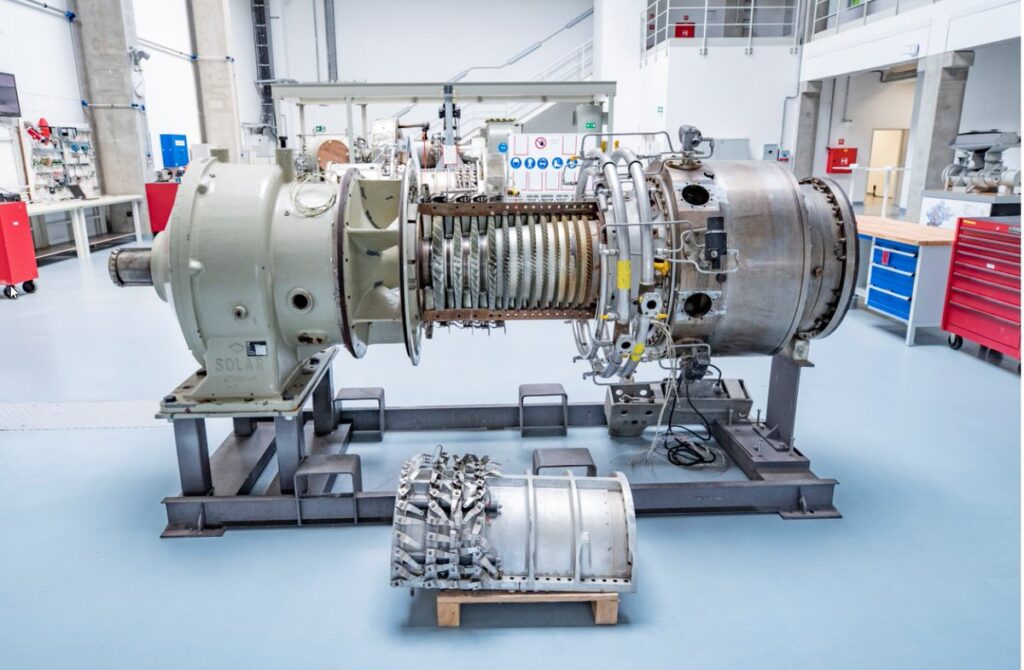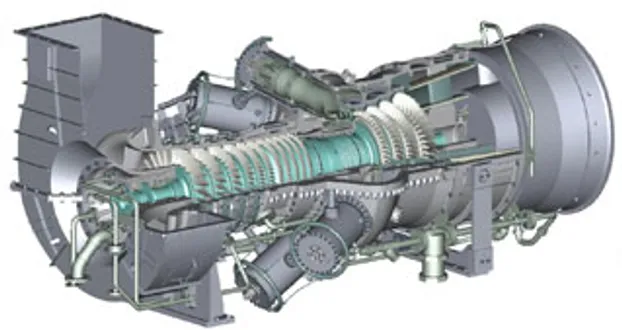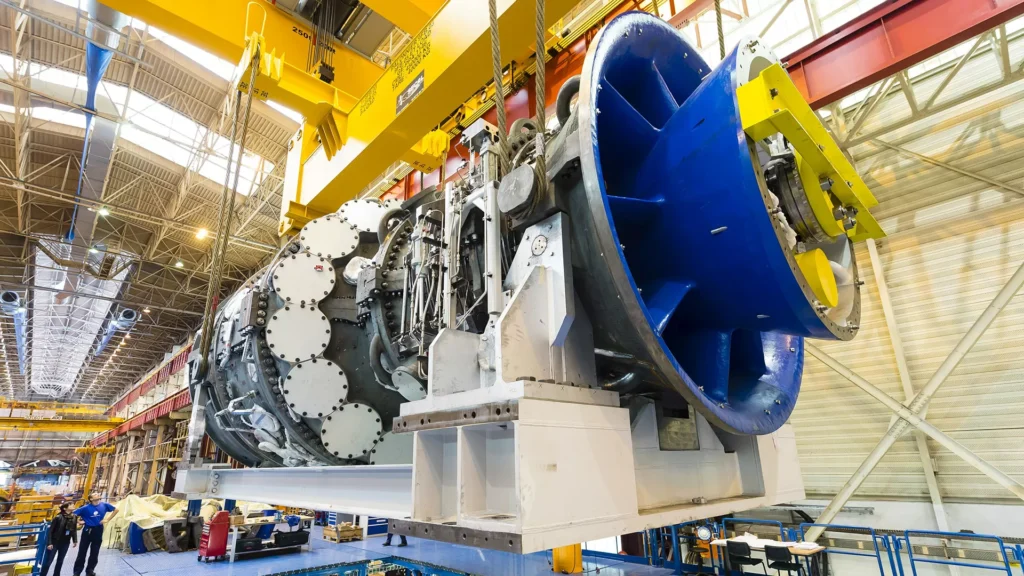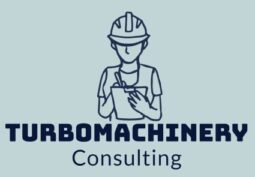GAS TURBINES - UPGRADE vs UPDATE vs UPRATE vs RERATE vs REVAMP

UPGRADE
UPDATE
Identify the need for an upgrade: The need for an upgrade may arise due to changes in operating conditions, regulatory standards, or the need to improve performance. Before any modifications are made, it’s important to identify the need for an upgrade and evaluate the potential benefits and risks.
Review and analyze the turbine’s current performance: Before any upgrades or modifications are made, it’s important to review and analyze the turbine’s current performance. This can involve reviewing operational data, conducting tests, and analyzing maintenance records. By doing so, you can identify areas where upgrades are needed and prioritize which upgrades to make first.
Replace or upgrade critical components: Upgrading or replacing critical components can significantly improve the reliability and efficiency of a gas turbine. This can involve replacing the turbine blades, combustion chamber, fuel injection system, or other critical components to improve performance and reduce the risk of equipment failure.
Upgrade control systems: Upgrading the control systems of a gas turbine can improve its overall performance and efficiency. This can involve upgrading the control software, sensors, and other hardware components to improve the accuracy and responsiveness of the turbine’s control system.
Implement a quality control program: Implementing a quality control program is critical when undertaking an upgrade or modernization project. It’s important to ensure that any modifications made are properly tested and meet all relevant standards and regulations. By implementing a quality control program, you can ensure that the turbine is operating as intended and reduce the risk of equipment failure.
Upgrade safety features: Upgrading the safety features of a gas turbine is critical to ensure the safety of the operators and equipment. This can involve upgrading safety systems, implementing fail-safe mechanisms, and providing additional operator training to reduce the risk of accidents or equipment failures.
In summary, upgrading or modernizing a gas turbine can significantly improve its performance, efficiency, and safety, as well as reduce the risk of critical failures and unscheduled shutdowns. By identifying the need for an upgrade, reviewing and analyzing the turbine’s current performance, upgrading critical components and control systems, implementing a quality control program, and upgrading safety features, you can ensure that the upgrade project improves the turbine’s performance while avoiding critical failures or unscheduled shutdowns.
Identify the need for an update: The need for an update may arise due to changes in operating conditions, regulatory standards, or the need to improve performance. Before any modifications are made, it’s important to identify the need for an update and evaluate the potential benefits and risks.
Review and analyze the turbine’s current performance: Before any updates or modifications are made, it’s important to review and analyze the turbine’s current performance. This can involve reviewing operational data, conducting tests, and analyzing maintenance records. By doing so, you can identify areas where updates are needed and prioritize which updates to make first.
Update control systems: Updating the control systems of a gas turbine can improve its overall performance and efficiency. This can involve updating the control software, sensors, and other hardware components to improve the accuracy and responsiveness of the turbine’s control system.
Update the combustion system: Updating the combustion system of a gas turbine can improve its efficiency and reduce emissions. This can involve updating the fuel injection system, improving the combustion chamber design, or implementing new technologies such as lean burn combustion.
Upgrade or replace critical components: Upgrading or replacing critical components can significantly improve the reliability and efficiency of a gas turbine. This can involve replacing the turbine blades, bearings, or other critical components to improve performance and reduce the risk of equipment failure.
Implement a quality control program: Implementing a quality control program is critical when undertaking an update project. It’s important to ensure that any modifications made are properly tested and meet all relevant standards and regulations. By implementing a quality control program, you can ensure that the turbine is operating as intended and reduce the risk of equipment failure.
Upgrade safety features: Upgrading the safety features of a gas turbine is critical to ensure the safety of the operators and equipment. This can involve upgrading safety systems, implementing fail-safe mechanisms, and providing additional operator training to reduce the risk of accidents or equipment failures.
In summary, updating the engineering and design of a gas turbine can improve its reliability, maintainability, availability, safety, quality control, and efficiency, thereby reducing the risk of critical failures and unscheduled shutdowns. By identifying the need for an update, reviewing and analyzing the turbine’s current performance, updating control systems, updating the combustion system, upgrading or replacing critical components, implementing a quality control program, and upgrading safety features, you can ensure that the update project improves the turbine’s performance while avoiding critical failures or unscheduled shutdowns.

UPRATE
RERATE
Conduct a feasibility study: Before any uprate project is initiated, it is important to conduct a feasibility study to assess the potential benefits and risks. The study should evaluate the impact of the uprate on the gas turbine’s reliability, maintainability, availability, safety, quality control, and efficiency, and identify any potential risks or drawbacks.
Identify the components that need upgrading: An uprate typically involves upgrading various components of the gas turbine, such as the compressor, turbine, combustor, and control systems. It is important to identify the components that need upgrading and prioritize them based on their impact on the gas turbine’s performance.
Optimize the combustor: Upgrading the combustor can significantly improve the gas turbine’s efficiency and reduce emissions. This can involve modifying the fuel injection system, improving the combustion chamber design, or implementing new technologies such as lean burn combustion.
Upgrade the turbine and compressor blades: Upgrading the turbine and compressor blades can improve the gas turbine’s performance and increase its power output. This can involve replacing the blades with newer, more efficient designs or modifying their geometry to optimize airflow.
Upgrade the control system: Upgrading the control system can improve the gas turbine’s responsiveness and reliability. This can involve updating the control software, sensors, and other hardware components to improve the accuracy and speed of the turbine’s control system.
Conduct extensive testing: Any modifications made during an uprate project should be thoroughly tested to ensure they meet all relevant standards and regulations. This can involve conducting simulations, lab testing, and field testing to ensure the gas turbine is operating as intended.
Implement a quality control program: Implementing a quality control program is critical when undertaking an uprate project. It’s important to ensure that any modifications made are properly tested and meet all relevant standards and regulations. By implementing a quality control program, you can ensure that the gas turbine is operating as intended and reduce the risk of equipment failure.
In summary, an uprate project for a gas turbine can improve its reliability, maintainability, availability, safety, quality control, and efficiency, thereby reducing the risk of critical failures and unscheduled shutdowns. By conducting a feasibility study, identifying the components that need upgrading, optimizing the combustor, upgrading the turbine and compressor blades, upgrading the control system, conducting extensive testing, and implementing a quality control program, you can ensure that the uprate project improves the gas turbine’s performance while avoiding critical failures or unscheduled shutdowns.
Consult with the Original Equipment Manufacturer (OEM): The OEM can provide valuable information about the gas turbine’s design limitations and the required upgrades for the desired rerate. The OEM can also provide support for installation and commissioning of the upgrades.
Perform a feasibility study: A feasibility study will assess the gas turbine’s suitability for the desired rerate. The study will consider factors such as the age of the gas turbine, its current condition, and the availability of suitable upgrades.
Design and engineering: Based on the results of the feasibility study, the required upgrades will be designed and engineered to ensure that the gas turbine can safely and reliably operate at the new power output level. The design and engineering process will involve modifications to the gas turbine’s components such as the combustor, turbine blades, and compressor.
Installation and commissioning: The installation and commissioning process must be carefully managed to ensure that the new components are installed correctly and that the gas turbine can operate safely and reliably at the new power output level. This will require a comprehensive testing program to ensure that the new components are functioning as expected and that the gas turbine meets the new design specifications.
Ongoing maintenance: Once the gas turbine has been rerated, ongoing maintenance will be required to ensure that it continues to operate safely and reliably. This will involve regular inspections, testing, and maintenance of the gas turbine’s components to identify and address any issues before they can lead to unscheduled shutdowns or critical failures.
Overall, the key to a successful rerate is careful planning and execution of the upgrade process, with a focus on improving the gas turbine’s reliability, maintainability, availability, safety, quality control, and efficiency. This will help to avoid unscheduled shutdowns and critical failures, and ensure that the gas turbine can continue to operate efficiently and reliably for many years to come.
REVAMP
REVAMP, as applied to gas turbines in the power generation, oil, gas, and petrochemical industries, aims to improve the reliability, performance, and safety of these machines while mitigating the risk of critical failures. Here’s an overview of how REVAMP strategies are employed in gas turbine applications:
Efficiency and Performance Enhancements: REVAMP projects often focus on improving the efficiency and performance of gas turbines. This can involve aerodynamic enhancements to the turbine blades and nozzles, optimizing the combustion process, and upgrading the control systems. These improvements result in increased power output, better fuel efficiency, and reduced emissions, leading to overall cost savings and environmental benefits.
Component Upgrades and Replacements: REVAMP initiatives often involve upgrading or replacing various components of gas turbines. This can include the combustion system, turbine blades, rotor, and casing. Upgraded components may be made of advanced materials, such as ceramic matrix composites, which offer improved durability, higher temperature capabilities, and reduced maintenance requirements. By replacing worn-out or outdated components, the reliability and longevity of the gas turbine can be significantly improved.
Advanced Monitoring and Diagnostics: REVAMP projects incorporate advanced monitoring and diagnostic systems to enable real-time monitoring of gas turbine health and performance. This includes the use of sensors to measure vibration, temperature, and other critical parameters, as well as the implementation of data analytics and predictive maintenance algorithms. By continuously monitoring the turbine’s condition, operators can identify potential issues early on, enabling proactive maintenance and preventing critical failures.
Control System Upgrades: Upgrading the control system of gas turbines is an essential aspect of REVAMP. Advanced control algorithms and automation technologies can provide more precise control over operating parameters, such as temperature, pressure, and fuel flow rates. Upgraded control systems enable better responsiveness to load changes, improved stability, and optimized operation, resulting in enhanced reliability and efficiency.
Safety and Environmental Enhancements: REVAMP initiatives also address safety and environmental considerations. Upgrades may include the installation of advanced safety systems, such as fire and gas detection systems, emergency shutdown mechanisms, and improved protection against overspeed conditions. Additionally, modifications can be made to meet stringent environmental regulations, such as emissions reduction measures and the implementation of advanced exhaust gas treatment technologies.
By implementing REVAMP strategies in gas turbines, both in new projects and existing plants, operators can enhance the reliability, performance, and safety of these machines while avoiding critical failures. This leads to increased operational efficiency, reduced downtime, improved safety, and compliance with environmental regulations.

